
A growing number of people are accessing the Internet through mobile devices (60% as of 2022), maps apps, and voice assisted technology. The technology they use to access information continues to lead them back to search engines, specifically Google. This growing mobile and voice enabled audience is large. To access these folks via paid media, one of the main ways to reach them is through search engine advertising.
Is PPC A Good Fit?
If you are just getting started with online advertising, you may be wondering how much it really costs to advertise on Google. The first step is to understand your options. As an advertiser, decide which platform makes the most sense for you, your business, and your ad budget. For many companies pay-per-click advertising (PPC for short), aka Google Ads or Bing Ads, is a great choice for marketing their business. For other companies Google Ads may not be the best fit.
If you’re in a very niche market with few internet searches or launching an entirely new product with zero awareness, PPC may not be the primary way to attract clicks to your website. Other methods like social media advertising, local SEO, local services ads, email marketing, or search engine optimization could make more sense for your target customer. Just because an agency offers paid search advertising doesn’t mean you need to be running ads in that space.
“Just because an agency offers paid search advertising doesn’t mean you need to be running ads in that space”
What degree of investment is needed also depends on your market share, the level of competition in your industry, and your companies growth goals. Let’s take a look a the basics of PPC and see which option makes the most sense for you.
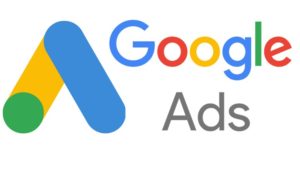
Google Ads in a Nutshell
Google Ads (aka AdWords) is Google’s main advertising platform for businesses and accounts for roughly 89% of Google’s total revenue. In 2023, Google Ads and related ad products generate nearly $224 Billion each year for the company. That’s a lot of moolah! It’s safe to say their ads are being used widely by advertisers, otherwise Google wouldn’t be growing ad revenue at such a pace.
Little Blue Links
Perhaps you have seen the blue links with the “Ad” icon? Google at one time used a yellow post-it note background for its ads, now it just puts “sponsored results” or “ads” next to the results. You may be asking yourself, “well, can’t people just see that its an ad and skip over it?”. Past studies have shown that in some cases, Google searchers don’t know the difference between paid and organic search results.
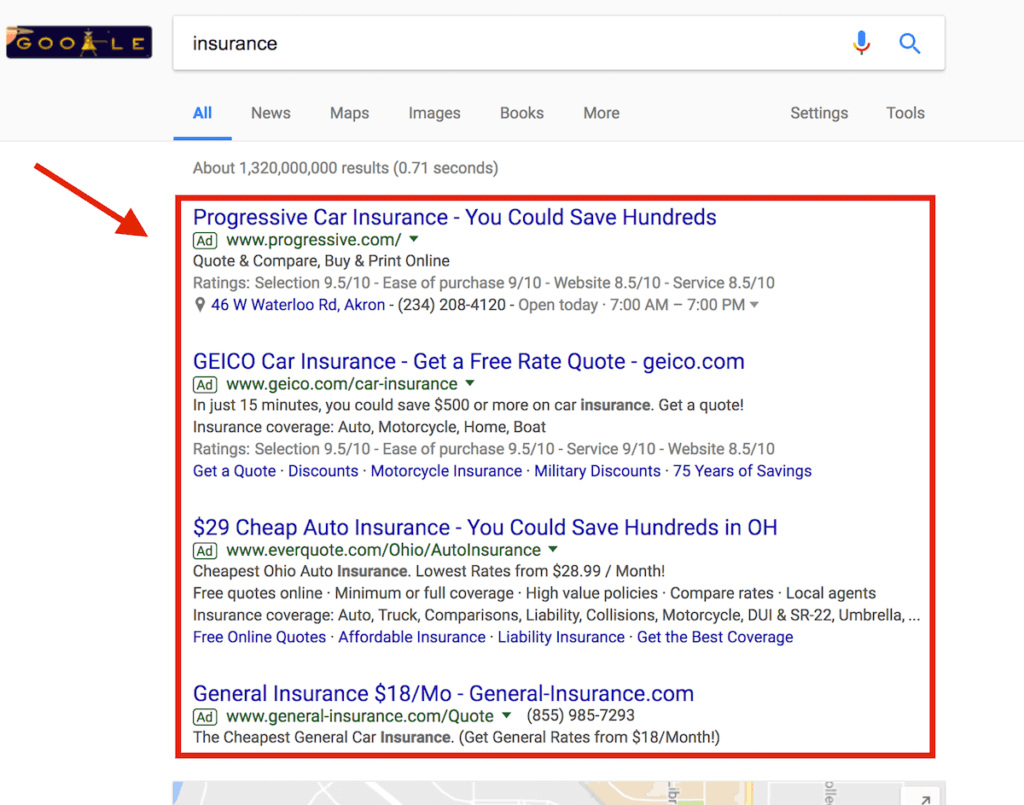
DIY Google Ads
A majority of new advertisers start with a basic keyword campaign in Google Ads with a modest budget of $25-50 per day. They pick a few dozen keywords using Google Keyword Planner and create one or two basic ads. After a few hours or so, they have an ad up and running on Google.
“…they are just buying a lot of unwanted clicks in order to get a handful of good leads”
The problem with this approach is there is very little strategy or targeting used. Most advertisers new to Google Ads are not familiar with the powerful features of the platform to decrease their cost-per-lead. Most just see a lot of clicks coming from Google and think “Great! I’m on the road to riches”. In reality, they are just buying a lot of unwanted clicks in order to get a handful of good leads. Before you give up on PPC after a few months, talk to a professional. Someone experienced in Google Ads management and help you reach your goals.
For most companies starting out, $500-1,000 a month in PPC ads may seem like a lot of money. In reality, that budget is a little low.
Google Ads Budgeting
For most companies starting out, $500-1,000 a month in Google Ads or Bing Ads may seem like a lot of money. In reality, that budget is a little low. Unless you’re running a local pizza shop, $500 isn’t going to go very far. Most industries have a $80-300 cost-per-lead when they are starting out with PPC. That means that they will only get 3-5 leads on a good month. Perhaps 1 or 2 of those leads will turn into real business. If your business needs more than 5 leads just to pay the bills, this becomes a problem.
Budget Update: The daily budget for AdWords has changed since October 2017. Your PPC campaigns can now spend up to two times the daily spend and to make up for days when the budget under-spends. This can be a challenge for companies that like to throttle their PPC spend during peak days or slow weeks.
PPC Cost by Industry
Below are a few examples of different industries and what you can expect from $3,000 per month in Google Adwords based on average cost-per-click (CPC) and average conversion rates by industry.
1. Competitive Legal Website
$20 average CPC
Ad Spend $3,000
150 clicks
7% conversion rate
10.5 new leads
2. Less-Competitive B2B Website
$5 average CPC
Ad Spend $3,000
600 clicks
7% conversion rate
42 new leads
3. Competitive Commerce Website
$3 average CPC
Ad Spend $3,000
1,000 clicks
3.5% conversion rate
35 new orders
4. Competitive Healthcare Website
$60 average CPC
Ad Spend $3,000
50 clicks
7% conversion rate
3.5 new leads
“When planning a budget for Google Ads, start with your goals (or desired sales) and work backwards”
Keep in mind to reach these type of numbers you will need someone running your campaign that knows what they are doing with a few years of experience optimizing ads with modest size budgets in the several $1,000s each month in ad spend. I would not give these projected numbers to someone new to PPC and expect the same results.
When planning a budget for Google Ads, start with your goals (or desired sales) and work backwards. Our Certified PPC Specialists can help you forecast what it might take to reach those goals based on things like search volume and your current Google Analytics data. From that point, you can decide how much you’re willing to spend to reach those goals. A good measure of performance is ROAS (return on ad spend), cost per sale or cost per action.
Average Cost-Per-Action
Ever wondered what the average cost per action (CPA) was in your industry? WordStream (2022) released a recent study that shows the average cost by industry. How does your current campaign measure up to the average?
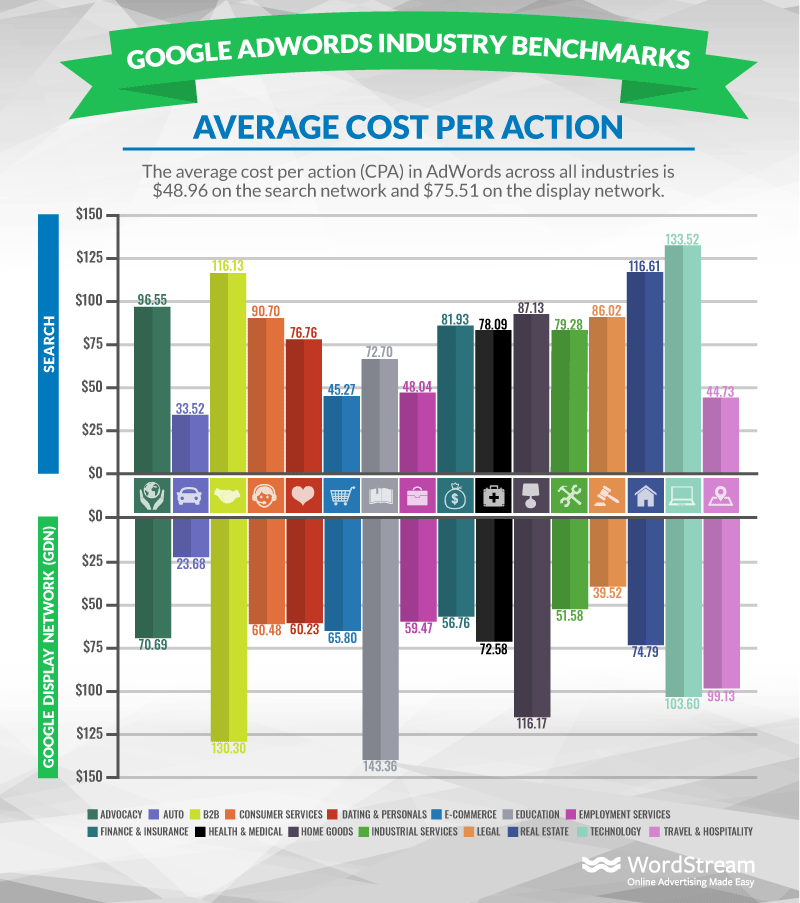
AdWords Default Billing
Wether your daily budget is $10 a day or $800, the default billed spend is set to $500 or 30 days, which ever comes first. At the end of the 30 day period or when your balance reaches $500, you will be billed for the balance remaining in your account. You have the option to pre-pay with credit card to avoid seeing lots of $500 charges in your credit card each month. If you average a spend of $5,000+ for a period 3 months, you can request a line of credit from Google. At that point, they will put you on invoicing rather than charging your credit card each week. This is a good option for companies looking to avoid the hassle of dealing with several monthly charges.
Smart Campaigns & Performance Max
For those DIY advertisers I mentioned earlier in the article, Google provides a do-it-yourself ad format called Smart Campaigns. Note: This ad format is a dumb down version of standard Google Ads, intended for small businesses (or mom and pop shops) with small budgets. If you have an online business that generates $5 million or more a year, this is not a good option. You will be very limited by the lack of features and lack of insight into your keyword and placement performance.
Performance Max campaigns are becoming popular as well which are essentially a version of smart campaign. They’re generally consumer focused, awareness focused, and combine several Google networks (Display, Search, Gmail, YouTube, etc) into one campaign. The benefit is you get exposure on several Google channels. The disadvantage is you need enough spend for the tool to work well and convert. I usually tell clients if you don’t have at least $2,000-3,000 or more to spend on Performance Max, then don’t test it out. More of your budget could be going to awareness focused Display ads vs. higher converting Search Text ads.
Update For 2023: Google has replaced AdWords Express with Smart Campaigns & Performance Max located inside of a standard Google Ads account.
The Google Search Network
One small change inside the Google Ads settings opens up your campaign to the Google search network partners. This may not be a good first step if you’re just getting started. This small change will open up your ads to all sorts of partner websites where your ads will appear.
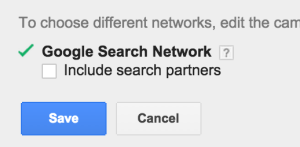
In my experience, the network partners are slightly cheaper clicks but may not generate the same results as “Google only” searchers. After you’re comfortable with the main search network, test out what impact this feature will have on your campaign. It could drive up your cost or help you lower your cost-per-lead.
Google Shopping
If you have an online retail business, Google Shopping may be good option. Google Shopping ads appear for product searches based on your settings and bids, similar to how normal PPC ads work.
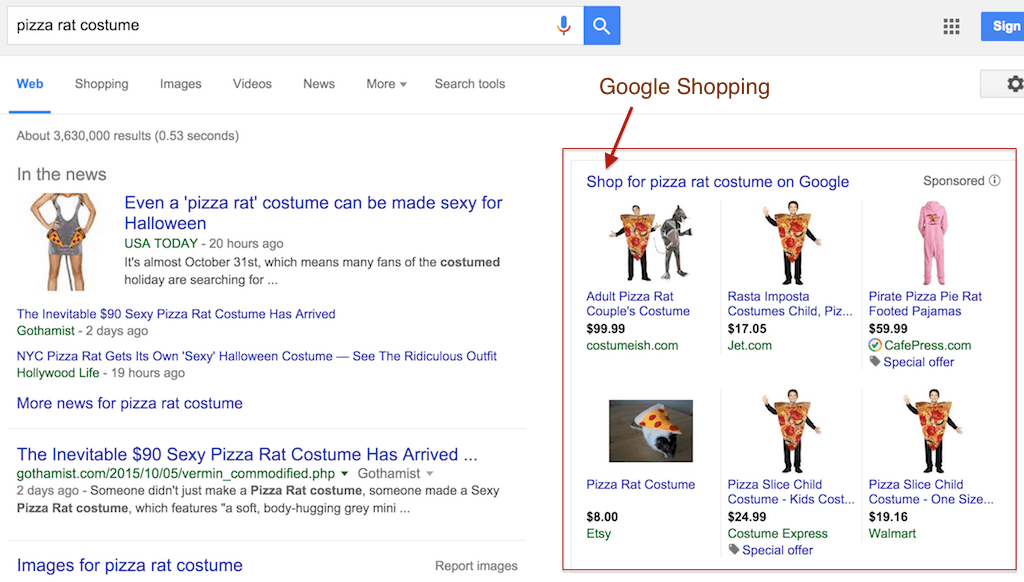
Your budget for these ads may be similar to the budget you have for keywords on Google Ads. Since the two ad products are connected, you can manage how much you’re spending on Shopping PPC Ads vs. Keyword Bids. Careful not to over-bid on these campaigns since they can really dig into your monthly budget. If you don’t have a budget of at least $1.5-2k to cover Google Ads + Shopping, then you probably shouldn’t bother setting up Shopping ads. Wether you choose to test Google Shopping can depend on how many products are in your catalog. Without enough products in your merchant account catalog, you may see lack luster results. Too few searches will be triggered for your small product mix, which will result in too few clicks.
Google Remarketing & Display
Part of the Google Ads platform is what’s called Remarketing and Display advertising. If you’ve ever shopped for a car and find that car following you all over the Internet, you know what I mean. These ads will be featured in the display banner ad section of most media websites base on what the advertisers bid.

I would only recommend Remarketing or Display advertising to a company that is already doing well with text PPC ads or a Google Shopping campaign. Display isn’t going to drive 1,000s of conversions without the supporting text ads to drive targeted traffic to the website for remarketing. Display (and Display Remarketing) helps with Brand awareness and will likely lead to more brand searches over time. Remarketing, if done correctly, can be a great way to offer deals to your customers to bring them back. Without incentive to return, your Remarketing campaigns can fall flat.
Additional Resources
Below are some additional resources you may find helpful when building your PPC pay-per-click strategy and budget.
- Why Google AdWords Isn’t Working For Your Business
- The Complete Google AdWords Budgeting Guide
- Guide To Pharma SEM
- How Artificial Intelligence Drives PPC Automation
- How to Choose a PPC Agency
Please Share
If you found this information helpful, please share on Twitter, Facebook, Linkedin, or Google+. If you’re interested in learning more about a paid media strategy or marketing program, our team is here for you. Drop us an email today to learn more.
photo credit: Alfred Grupstra Volatile Messages (license)
